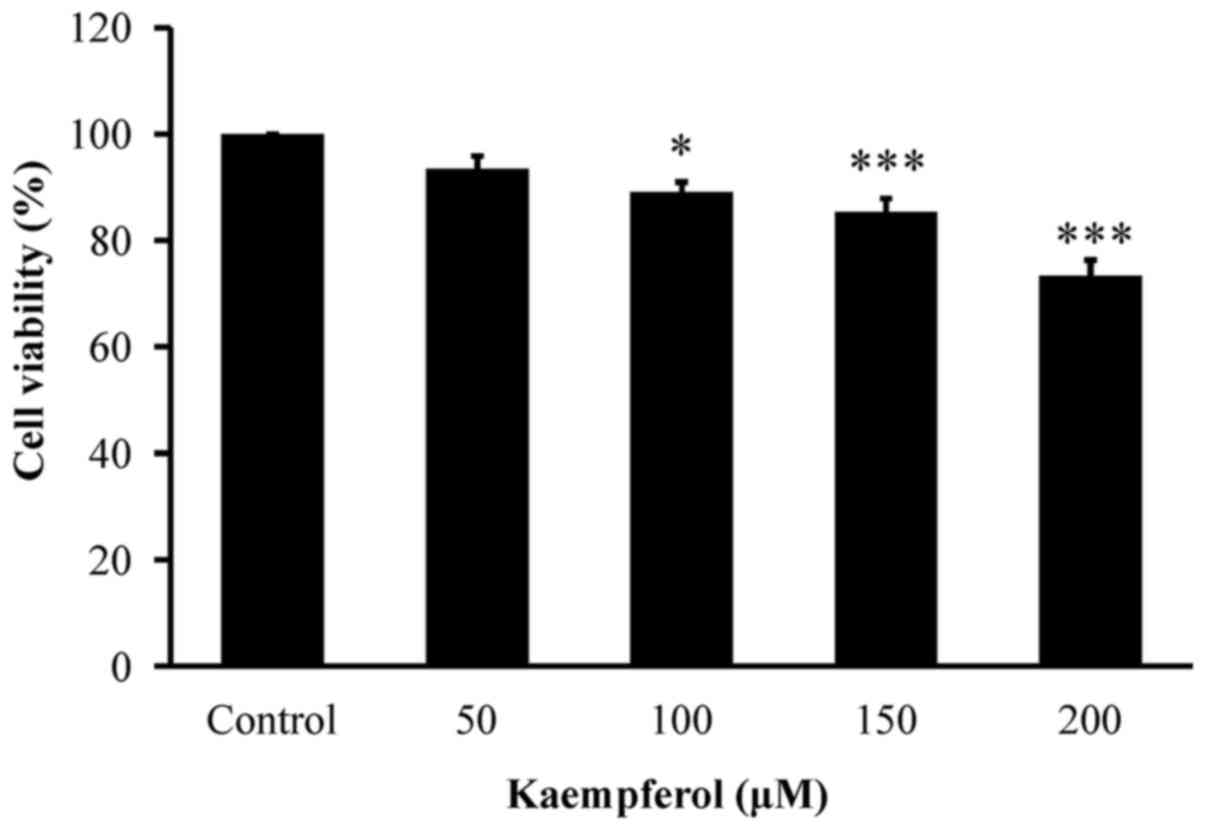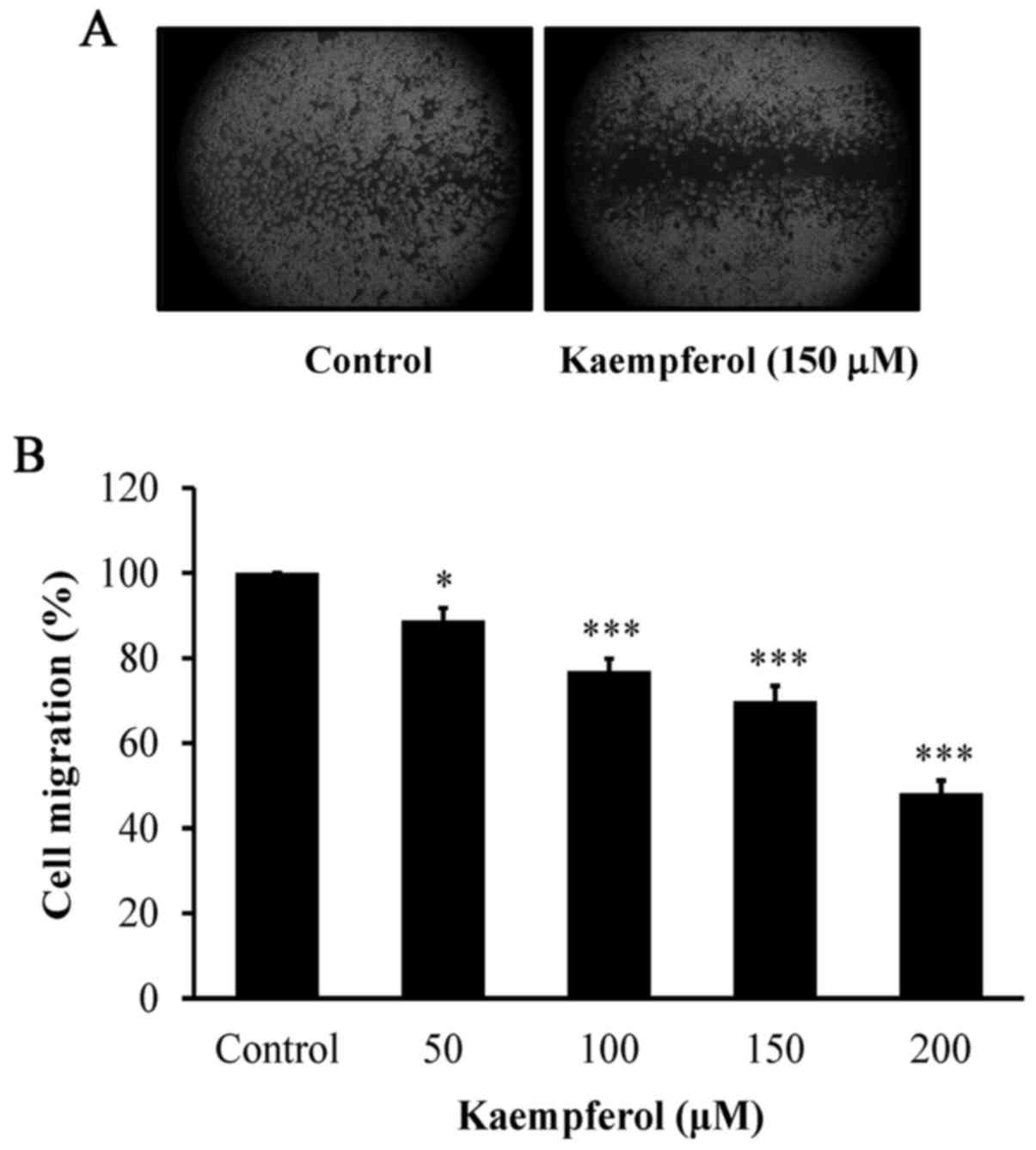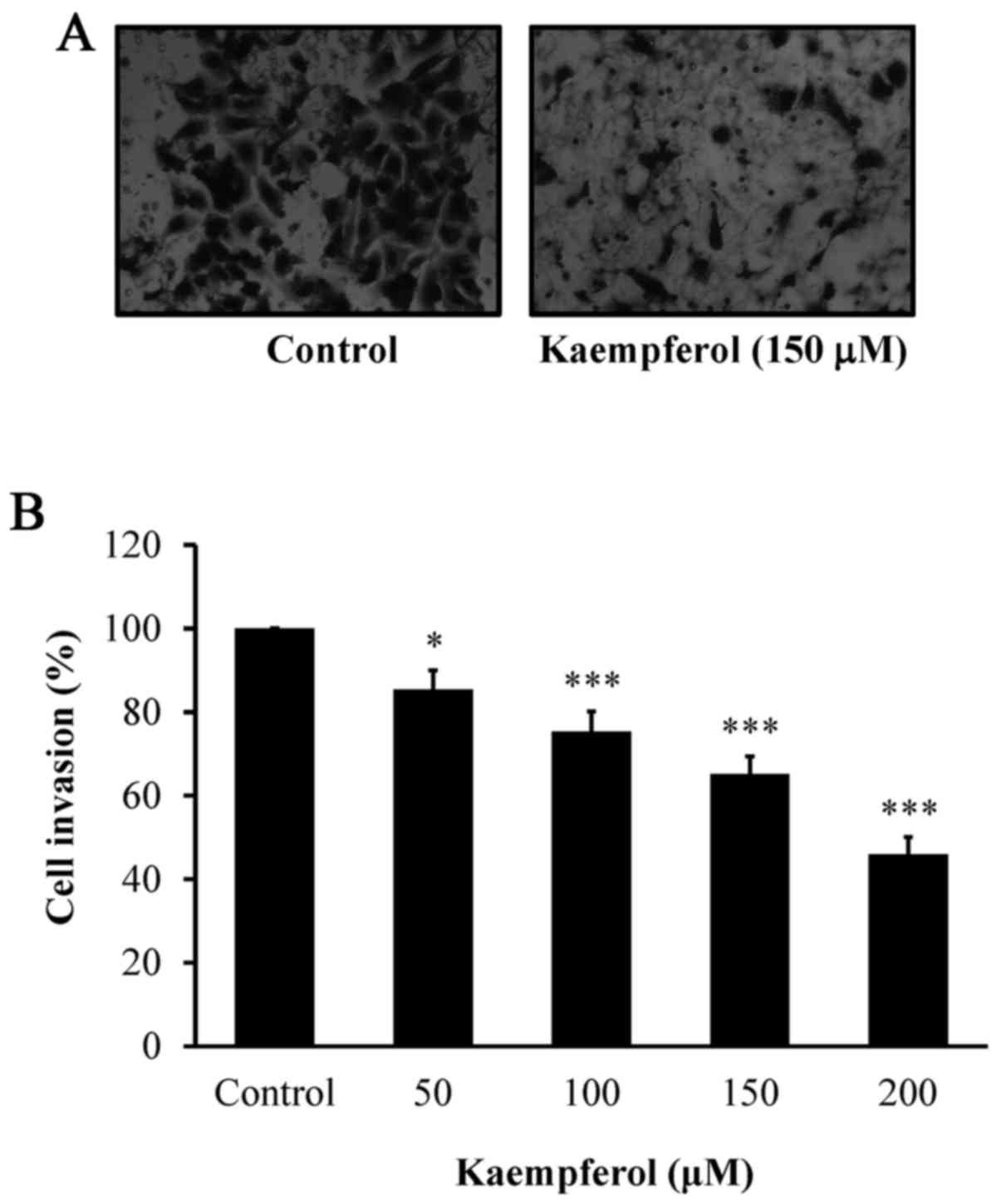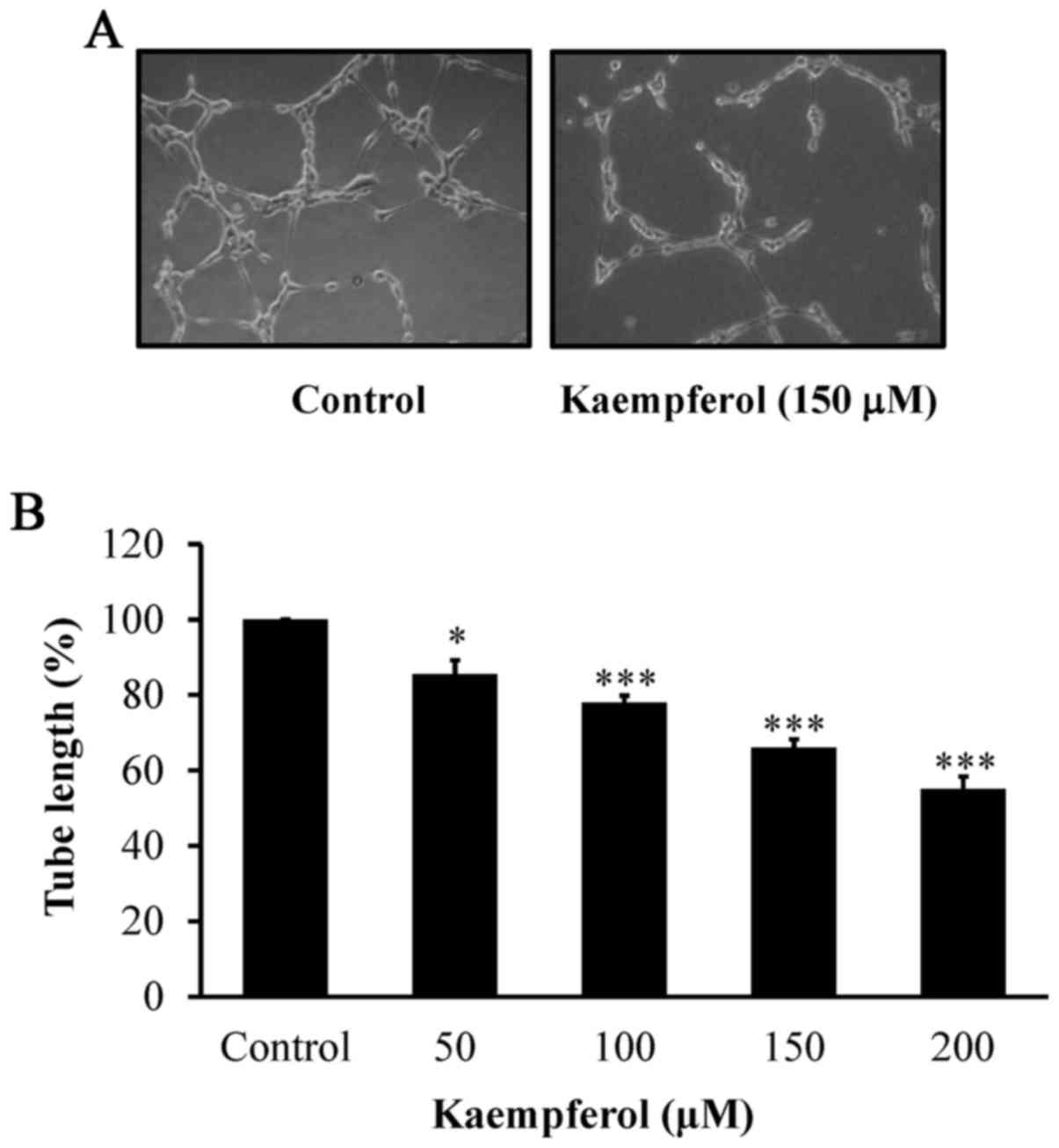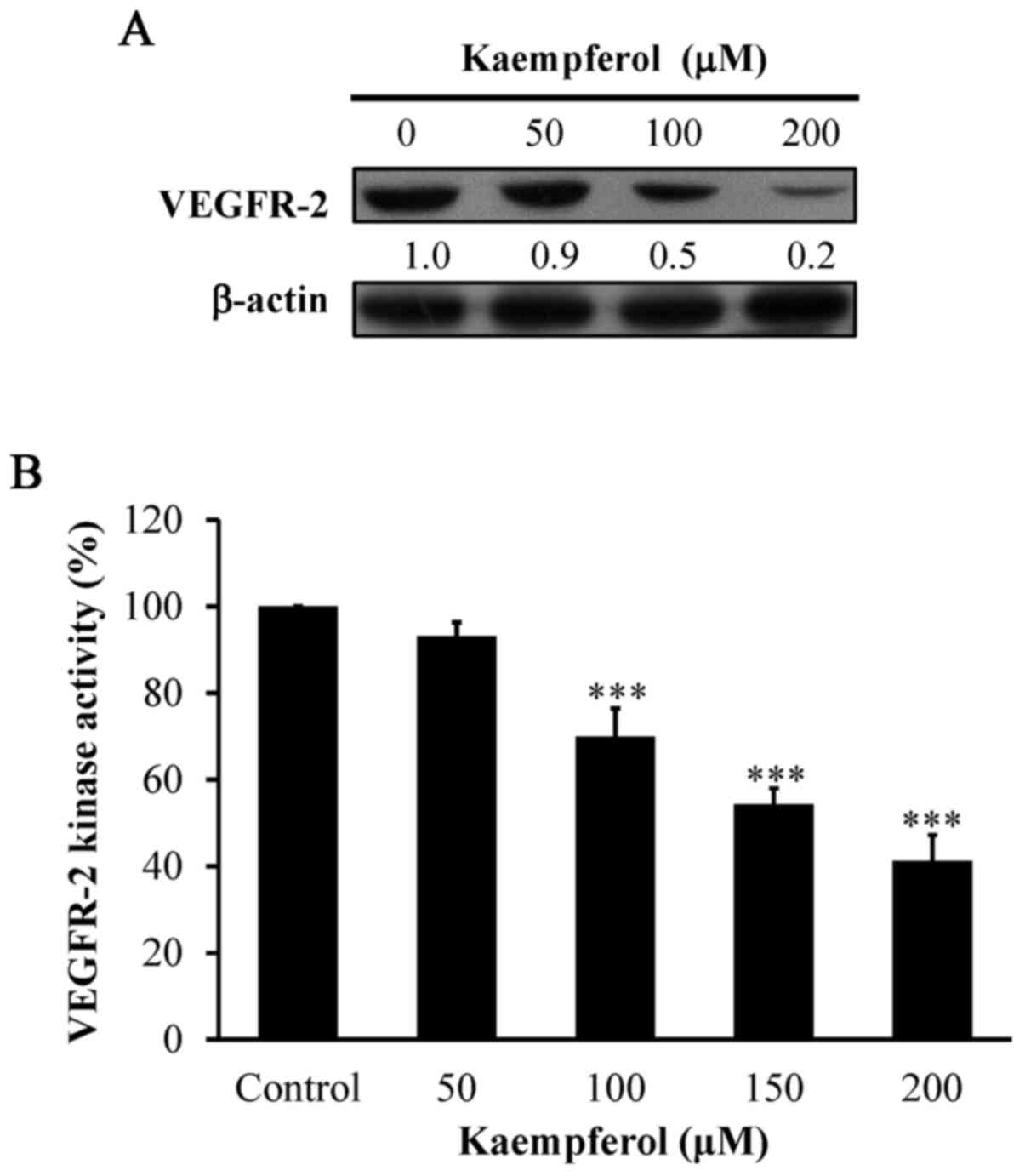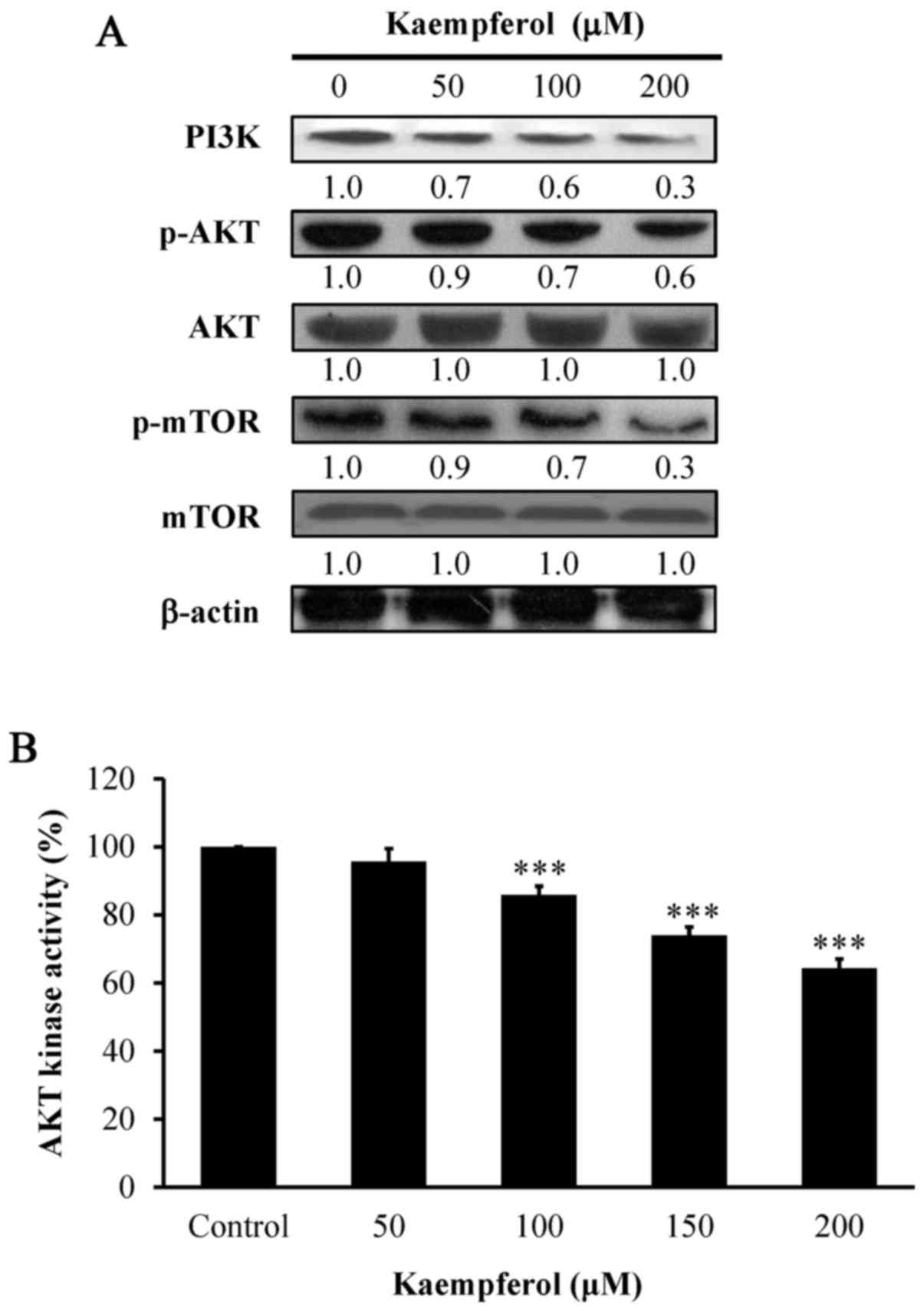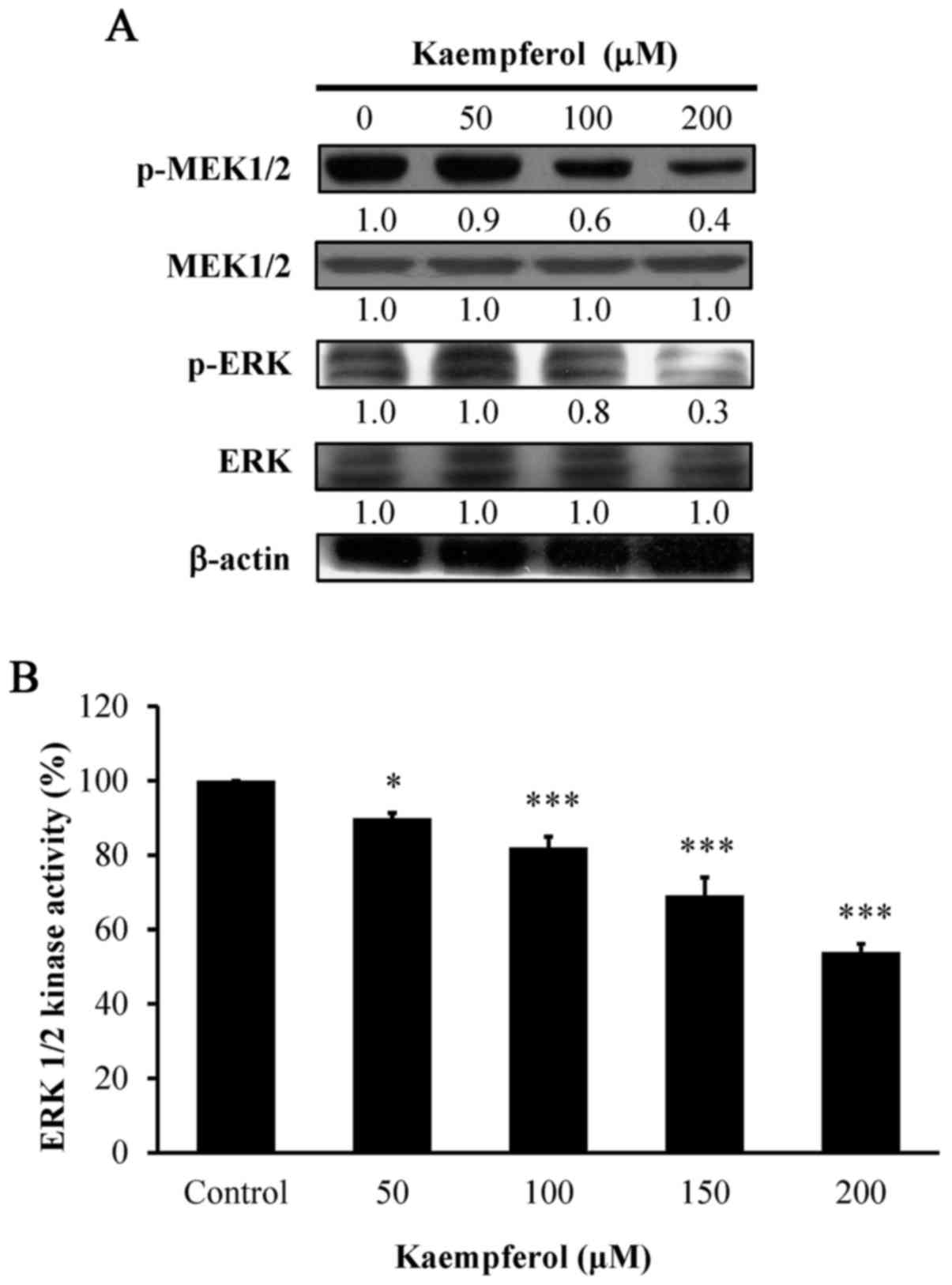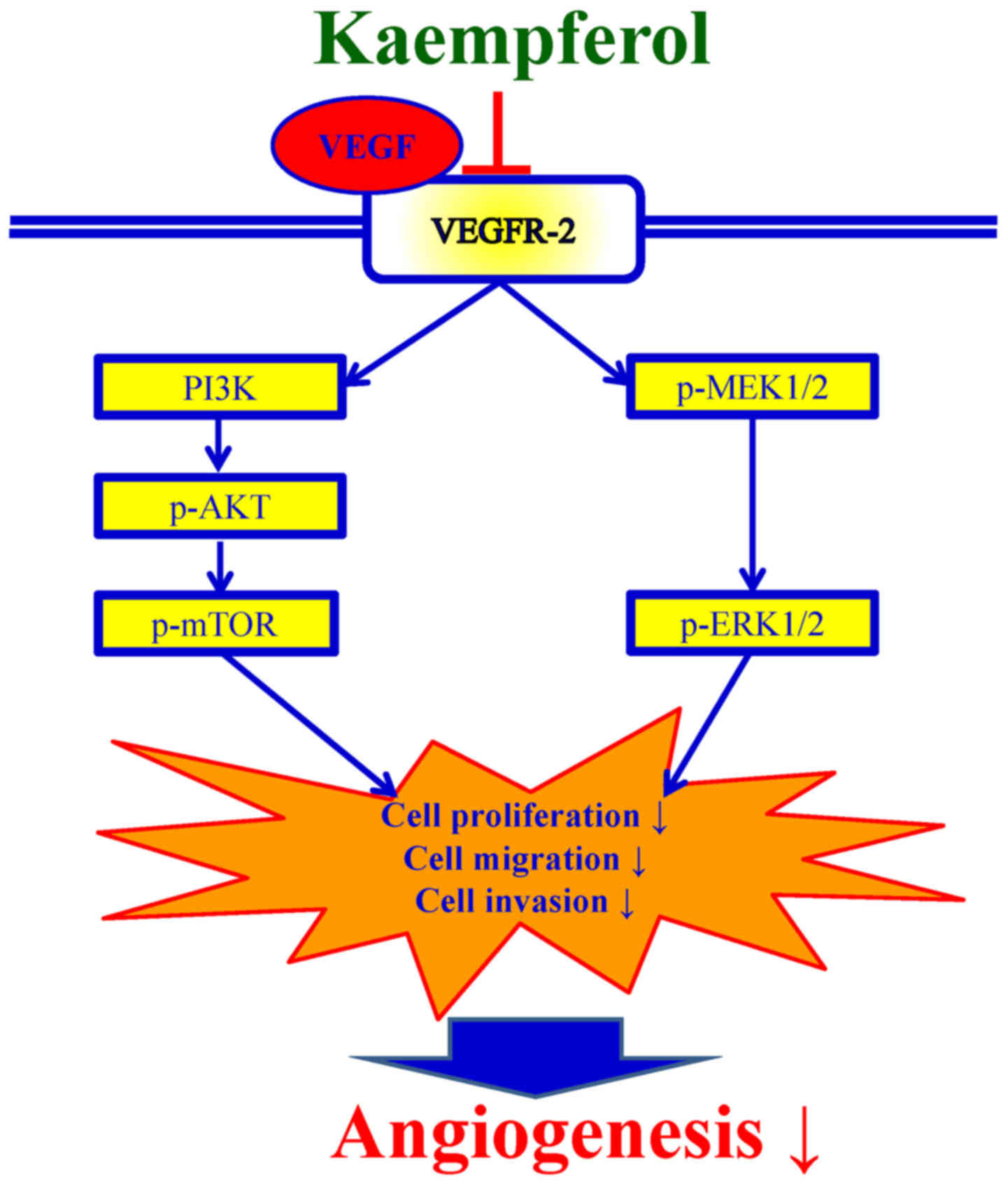|
1
|
Varinska L, Kubatka P, Mojzis J, Zulli A,
Gazdikova K, Zubor P, Büsselberg D, Caprnda M, Opatrilova R,
Gasparova I, et al: Angiomodulators in cancer therapy: New
perspectives. Biomed Pharmacother. 89:578–590. 2017. View Article : Google Scholar : PubMed/NCBI
|
|
2
|
Aalders KC, Tryfonidis K, Senkus E and
Cardoso F: Anti-angiogenic treatment in breast cancer: Facts,
successes, failures and future perspectives. Cancer Treat Rev.
53:98–110. 2017. View Article : Google Scholar : PubMed/NCBI
|
|
3
|
Markowska A, Sajdak S, Markowska J and
Huczyński A: Angiogenesis and cancer stem cells: New perspectives
on therapy of ovarian cancer. Eur J Med Chem. 142:87–94. 2017.
View Article : Google Scholar : PubMed/NCBI
|
|
4
|
Lupo G, Caporarello N, Olivieri M,
Cristaldi M, Motta C, Bramanti V, Avola R, Salmeri M, Nicoletti F
and Anfuso CD: Anti-angiogenic therapy in cancer: Downsides and new
pivots for precision medicine. Front Pharmacol. 7:5192017.
View Article : Google Scholar : PubMed/NCBI
|
|
5
|
Ai B, Bie Z, Zhang S and Li A: Paclitaxel
targets VEGF-mediated angiogenesis in ovarian cancer treatment. Am
J Cancer Res. 6:1624–1635. 2016.PubMed/NCBI
|
|
6
|
Allegrini G, Coltelli L, Orlandi P,
Fontana A, Camerini A, Ferro A, Cazzaniga M, Casadei V, Lucchesi S,
Bona E, et al: Pharmacogenetic interaction analysis of VEGFR-2 and
IL-8 polymorphisms in advanced breast cancer patients treated with
paclitaxel and bevacizumab. Pharmacogenomics. 15:1985–1999. 2014.
View Article : Google Scholar : PubMed/NCBI
|
|
7
|
Sini V, Cassano A, Corsi D, De Laurentiis
M, Gamucci T, Mauri M, Naso G, Roselli M, Ruggeri EM, Tonini G, et
al: Bevacizumab as first-line treatment in HER2-negative advanced
breast cancer: Pros and cons. Tumori. 102:472–480. 2016. View Article : Google Scholar : PubMed/NCBI
|
|
8
|
Pentheroudakis G, Kotoula V, Kouvatseas G,
Charalambous E, Dionysopoulos D, Zagouri F, Koutras A, Papazisis K,
Pectasides D, Samantas E, et al: Association of VEGF-A splice
variant mRNA expression with outcome in bevacizumab-treated
patients with metastatic breast cancer. Clin Breast Cancer.
14:330–338. 2014. View Article : Google Scholar : PubMed/NCBI
|
|
9
|
Abd El-Rahman SS, Shehab G and Nashaat H:
Epigallocatechin-3-Gallate: The prospective targeting of cancer
stem cells and preventing metastasis of chemically-induced mammary
cancer in rats. Am J Med Sci. 354:54–63. 2017. View Article : Google Scholar : PubMed/NCBI
|
|
10
|
Walczak K, Marciniak S and Rajtar G:
Cancer chemoprevention-selected molecular mechanisms. Postepy Hig
Med Dosw. 71:149–161. 2017. View Article : Google Scholar
|
|
11
|
Saberi-Karimian M, Katsiki N, Caraglia M,
Boccellino M, Majeed M and Sahebkar A: Vascular endothelial growth
factor: An important molecular target of curcumin. Crit Rev Food
Sci Nutr. 1–14. 2017. View Article : Google Scholar : PubMed/NCBI
|
|
12
|
Bhattacharjee S and Mandal DP:
Angiogenesis modulation: The ‘spice effect’. J Environ Pathol
Toxicol Oncol. 31:273–283. 2012. View Article : Google Scholar : PubMed/NCBI
|
|
13
|
Wang S, Shen P, Zhou J and Lu Y: Diet
phytochemicals and cutaneous carcinoma chemoprevention: A review.
Pharmacol Res. 119:327–346. 2017. View Article : Google Scholar : PubMed/NCBI
|
|
14
|
Kilari EK and Putta S: Biological and
phytopharmacological descriptions of litchi chinensis. Pharmacogn
Rev. 10:60–65. 2016. View Article : Google Scholar : PubMed/NCBI
|
|
15
|
Chen AY and Chen YC: A review of the
dietary flavonoid, kaempferol on human health and cancer
chemoprevention. Food Chem. 138:2099–2107. 2013. View Article : Google Scholar : PubMed/NCBI
|
|
16
|
Murakami A and Ohnishi K: Target molecules
of food phytochemicals: Food science bound for the next dimension.
Food Funct. 3:462–476. 2012. View Article : Google Scholar : PubMed/NCBI
|
|
17
|
Zhang R, Ai X, Duan Y, Xue M, He W, Wang
C, Xu T, Xu M, Liu B, Li C, et al: Kaempferol ameliorates H9N2
swine influenza virus-induced acute lung injury by inactivation of
TLR4/MyD88-mediated NF-κB and MAPK signaling pathways. Biomed
Pharmacother. 89:660–672. 2017. View Article : Google Scholar : PubMed/NCBI
|
|
18
|
Zhuang Z, Ye G and Huang B: Kaempferol
alleviates the interleukin-1β-induced inflammation in rat
osteoarthritis chondrocytes via suppression of NF-κB. Med Sci
Monit. 23:3925–3931. 2017. View Article : Google Scholar : PubMed/NCBI
|
|
19
|
Duan L, Ding W, Liu X, Cheng X, Cai J, Hua
E and Jiang H: Biosynthesis and engineering of kaempferol in
Saccharomyces cerevisiae. Microb Cell Fact. 16:1652017.
View Article : Google Scholar : PubMed/NCBI
|
|
20
|
Han S, Nguyen Hanh TT, Hur J, Kim NM, Kim
SB, Hwang KH, Moon YH, Kang C, Chung B, Kim YM, et al: Synthesis
and characterization of novel astragalin galactosides using
β-galactosidase from Bacillus circulans. Enzyme Microb
Technol. 103:59–67. 2017. View Article : Google Scholar : PubMed/NCBI
|
|
21
|
Hung TW, Chen PN, Wu HC, Wu SW, Tsai PY,
Hsieh YS and Chang HR: Kaempferol inhibits the invasion and
migration of renal cancer cells through the downregulation of AKT
and FAK pathways. Int J Med Sci. 14:984–993. 2017. View Article : Google Scholar : PubMed/NCBI
|
|
22
|
Kashafi E, Moradzadeh M, Mohamadkhani A
and Erfanian S: Kaempferol increases apoptosis in human cervical
cancer HeLa cells via PI3K/AKT and telomerase pathways. Biomed
Pharmacother. 89:573–577. 2017. View Article : Google Scholar : PubMed/NCBI
|
|
23
|
Lee GA, Choi KC and Hwang KA: Kaempferol,
a phytoestrogen, suppressed triclosan-induced
epithelial-mesenchymal transition and metastatic-related behaviors
of MCF-7 breast cancer cells. Environ Toxicol Pharmacol. 49:48–57.
2017. View Article : Google Scholar : PubMed/NCBI
|
|
24
|
Okoye FB, Sawadogo WR, Sendker J, Aly AH,
Quandt B, Wray V, Hensel A, Esimone CO, Debbab A, Diederich M and
Proksch P: Flavonoid glycosides from Olax mannii: Structure
elucidation and effect on the nuclear factor kappa B pathway. J
Ethnopharmacol. 176:27–34. 2015. View Article : Google Scholar : PubMed/NCBI
|
|
25
|
Song W, Dang Q, Xu D, Chen Y, Zhu G, Wu K,
Zeng J, Long Q, Wang X, He D and Li L: Kaempferol induces cell
cycle arrest and apoptosis in renal cell carcinoma through EGFR/p38
signaling. Oncol Rep. 31:1350–1356. 2014. View Article : Google Scholar : PubMed/NCBI
|
|
26
|
Huang WW, Chiu YJ, Fan MJ, Lu HF, Yeh HF,
Li KH, Chen PY, Chung JG and Yang JS: Kaempferol induced apoptosis
via endoplasmic reticulum stress and mitochondria-dependent pathway
in human osteosarcoma U-2 OS cells. Mol Nutr Food Res.
54:1585–1595. 2010. View Article : Google Scholar : PubMed/NCBI
|
|
27
|
Huang WW, Tsai SC, Peng SF, Lin MW, Chiang
JH, Chiu YJ, Fushiya S, Tseng MT and Yang JS: Kaempferol induces
autophagy through AMPK and AKT signaling molecules and causes G2/M
arrest via downregulation of CDK1/cyclin B in SK-HEP-1 human
hepatic cancer cells. Int J Oncol. 42:2069–2077. 2013. View Article : Google Scholar : PubMed/NCBI
|
|
28
|
Chen HJ, Lin CM, Lee CY, Shih NC, Peng SF,
Tsuzuki M, Amagaya S, Huang WW and Yang JS: Kaempferol suppresses
cell metastasis via inhibition of the ERK-p38-JNK and AP-1
signaling pathways in U-2 OS human osteosarcoma cells. Oncol Rep.
30:925–932. 2013. View Article : Google Scholar : PubMed/NCBI
|
|
29
|
Lee CF, Yang JS, Tsai FJ, Chiang NN, Lu
CC, Huang YS, Chen C and Chen FA: Kaempferol induces
ATM/p53-mediated death receptor and mitochondrial apoptosis in
human umbilical vein endothelial cells. Int J Oncol. 48:2007–2014.
2016. View Article : Google Scholar : PubMed/NCBI
|
|
30
|
Yang JS, Lin CA, Lu CC, Wen YF, Tsai FJ
and Tsai SC: Carboxamide analog ITR-284 evokes apoptosis and
inhibits migration ability in human lung adenocarcinoma A549 cells.
Oncol Rep. 37:1786–1792. 2017. View Article : Google Scholar : PubMed/NCBI
|
|
31
|
Tsai SC, Tsai MH, Chiu CF, Lu CC, Kuo SC,
Chang NW and Yang JS: AMPK-dependent signaling modulates the
suppression of invasion and migration by fenofibrate in CAL 27 oral
cancer cells through NF-κB pathway. Environ Toxicol. 31:866–876.
2016. View Article : Google Scholar : PubMed/NCBI
|
|
32
|
Goodwin CR, Lal B, Zhou X, Ho S, Xia S,
Taeger A, Murray J and Laterra J: Cyr61 mediates hepatocyte growth
factor-dependent tumor cell growth, migration, and Akt activation.
Cancer Res. 70:2932–2941. 2010. View Article : Google Scholar : PubMed/NCBI
|
|
33
|
Lu CC, Chen HP, Chiang JH, Jin YA, Kuo SC,
Wu TS, Hour MJ, Yang JS and Chiu YJ: Quinazoline analog HMJ-30
inhibits angiogenesis: Involvement of endothelial cell apoptosis
through ROS-JNK-mediated death receptor 5 signaling. Oncol Rep.
32:597–606. 2014. View Article : Google Scholar : PubMed/NCBI
|
|
34
|
Chiang JH, Yang JS, Lu CC, Hour MJ, Chang
SJ, Lee TH and Chung JG: Newly synthesized quinazolinone HMJ-38
suppresses angiogenetic responses and triggers human umbilical vein
endothelial cell apoptosis through p53-modulated Fas/death receptor
signaling. Toxicol Appl Pharmacol. 269:150–162. 2013. View Article : Google Scholar : PubMed/NCBI
|
|
35
|
Fujita H, Gomori A, Fujioka Y, Kataoka Y,
Tanaka K, Hashimoto A, Suzuki T, Ito K, Haruma T, Yamamoto-Yokoi H,
et al: High potency VEGFRs/MET/FMS triple blockade by TAS-115
concomitantly suppresses tumor progression and bone destruction in
tumor-induced bone disease model with lung carcinoma cells. PLoS
One. 11:e01648302016. View Article : Google Scholar : PubMed/NCBI
|
|
36
|
Pu K, Yuan L, Chen L, Wang A, Zhou X,
Zhang H and Zhu Y: Identification of VEGFR2-binding peptides using
high throughput bacterial display methods and functional
assessment. Curr Cancer Drug Targets. 15:158–170. 2015. View Article : Google Scholar : PubMed/NCBI
|
|
37
|
Yang JS, Hour MJ, Huang WW, Lin KL, Kuo SC
and Chung JG: MJ-29 inhibits tubulin polymerization, induces
mitotic arrest, and triggers apoptosis via cyclin-dependent kinase
1-mediated Bcl-2 phosphorylation in human leukemia U937 cells. J
Pharmacol Exp Ther. 334:477–488. 2010. View Article : Google Scholar : PubMed/NCBI
|
|
38
|
Lee MR, Lin C, Lu CC, Kuo SC, Tsao JW,
Juan YN, Chiu HY, Lee FY, Yang JS and Tsai FJ: YC-1 induces G0/G1
phase arrest and mitochondria-dependent apoptosis in
cisplatin-resistant human oral cancer CAR cells. Biomedicine.
7:122017. View Article : Google Scholar : PubMed/NCBI
|
|
39
|
Davatgaran-Taghipour Y, Masoomzadeh S,
Farzaei MH, Bahramsoltani R, Karimi-Soureh Z, Rahimi R and
Abdollahi M: Polyphenol nanoformulations for cancer therapy:
Experimental evidence and clinical perspective. Int J Nanomedicine.
12:2689–2702. 2017. View Article : Google Scholar : PubMed/NCBI
|
|
40
|
Liu RH: Health-promoting components of
fruits and vegetables in the diet. Adv Nutr. 4 Suppl:S384–S392.
2013. View Article : Google Scholar
|
|
41
|
Arif H, Sohail A, Farhan M, Rehman AA,
Ahmad A and Hadi SM: Flavonoids-induced redox cycling of copper
ions leads to generation of reactive oxygen species: A potential
role in cancer chemoprevention. Int J Biol Macromol. 106:569–578.
2018. View Article : Google Scholar : PubMed/NCBI
|
|
42
|
Choi EJ and Ahn WS: Kaempferol induced the
apoptosis via cell cycle arrest in human breast cancer MDA-MB-453
cells. Nutr Res Pract. 2:322–325. 2008. View Article : Google Scholar : PubMed/NCBI
|
|
43
|
Lee HS, Cho HJ, Yu R, Lee KW, Chun HS and
Park JH: Mechanisms underlying apoptosis-inducing effects of
Kaempferol in HT-29 human colon cancer cells. Int J Mol Sci.
15:2722–2737. 2014. View Article : Google Scholar : PubMed/NCBI
|
|
44
|
Che J, Liang B, Zhang Y, Wang Y, Tang J
and Shi G: Kaempferol alleviates ox-LDL-induced apoptosis by
up-regulation of autophagy via inhibiting PI3K/Akt/mTOR pathway in
human endothelial cells. Cardiovasc Pathol. 31:57–62. 2017.
View Article : Google Scholar : PubMed/NCBI
|
|
45
|
Varshney R, Gupta S and Roy P:
Cytoprotective effect of kaempferol against palmitic acid-induced
pancreatic β-cell death through modulation of autophagy via
AMPK/mTOR signaling pathway. Mol Cell Endocrinol. 448:1–20. 2017.
View Article : Google Scholar : PubMed/NCBI
|
|
46
|
Cho IH, Choi YJ, Gong JH, Shin D, Kang MK
and Kang YH: Astragalin inhibits autophagy-associated airway
epithelial fibrosis. Respir Res. 16:512015. View Article : Google Scholar : PubMed/NCBI
|
|
47
|
Huang HC, Syu KY and Lin JK: Chemical
composition of Solanum nigrum linn extract and induction of
autophagy by leaf water extract and its major flavonoids in AU565
breast cancer cells. J Agric Food Chem. 58:8699–8708. 2010.
View Article : Google Scholar : PubMed/NCBI
|
|
48
|
Kim JD, Liu L, Guo W and Meydani M:
Chemical structure of flavonols in relation to modulation of
angiogenesis and immune-endothelial cell adhesion. J Nutr Biochem.
17:165–176. 2006. View Article : Google Scholar : PubMed/NCBI
|
|
49
|
Zhao X, Song JL, Kim JD, Lee JS and Park
KY: Fermented Pu-erh tea increases in vitro anticancer activities
in HT-29 cells and has antiangiogenetic effects on HUVECs. J
Environ Pathol Toxicol Oncol. 32:275–288. 2013. View Article : Google Scholar : PubMed/NCBI
|
|
50
|
Yüksel Ş, Akyerli Boylu C and Yakicier
Cengiz M: Angiogenesis, invasion, and metastasis characteristics of
hepatocellular carcinoma. J Gastrointest Cancer. Aug 7–2017.
View Article : Google Scholar
|
|
51
|
Ramjiawan RR, Griffioen AW and Duda DG:
Anti-angiogenesis for cancer revisited: Is there a role for
combinations with immunotherapy? Angiogenesis. 20:185–204. 2017.
View Article : Google Scholar : PubMed/NCBI
|
|
52
|
Chebib R, Verlingue L, Cozic N, Faron M,
Burtin P, Boige V, Hollebecque A and Malka D: Angiogenesis
inhibition in the second-line treatment of metastatic colorectal
cancer: A systematic review and pooled analysis. Semin Oncol.
44:114–128. 2017. View Article : Google Scholar : PubMed/NCBI
|
|
53
|
Wu M, Xiong H, Xu Y, Xiong X, Zou H, Zheng
M, Wang X and Zhou X: Association between VEGF-A and VEGFR-2
polymorphisms and response to treatment of neovascular AMD with
anti-VEGF agents: A meta-analysis. Br J Ophthalmol. 101:976–984.
2017. View Article : Google Scholar : PubMed/NCBI
|
|
54
|
Li W, Man XY, Li CM, Chen JQ, Zhou J, Cai
SQ, Lu ZF and Zheng M: VEGF induces proliferation of human hair
follicle dermal papilla cells through VEGFR-2-mediated activation
of ERK. Exp Cell Res. 318:1633–1640. 2012. View Article : Google Scholar : PubMed/NCBI
|
|
55
|
Zhang Z, Neiva KG, Lingen MW, Ellis LM and
Nör JE: VEGF-dependent tumor angiogenesis requires inverse and
reciprocal regulation of VEGFR1 and VEGFR2. Cell Death Differ.
17:499–512. 2010. View Article : Google Scholar : PubMed/NCBI
|



